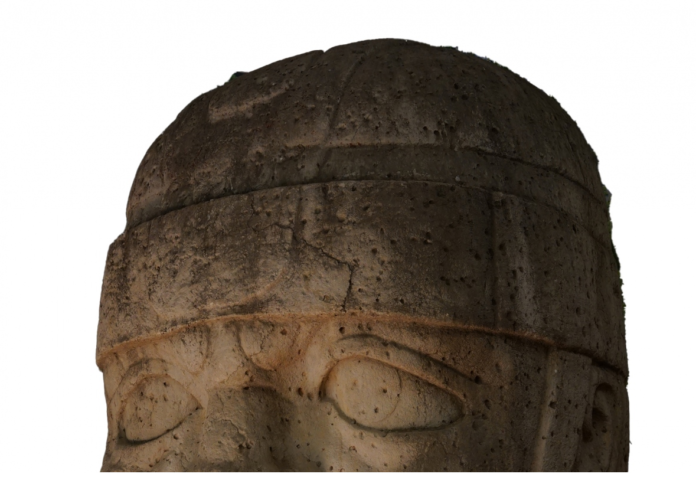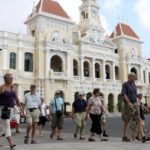The event is part of the celebrations for the 213th anniversary of Mexico’s independence. The artwork will be permanently displayed in the museum courtyard starting from September 15th. It is an authentic replica of the original head known as “The King,” which is renowned for its majestic appearance.
The original piece dates back over 3,000 years and is one of 17 monumental heads that are more than 2 meters tall and weigh over 2 tons. These heads are considered the most significant representation of the Olmec culture, the oldest civilization in Mexico and the Americas.
The monumental Olmec head, known as “The King,” represents the rulers of that era and bears Mesoamerican ethnic features such as a broad nose, thick lips, and slanted eyes. It also embodies the aesthetic standards of beauty during that time. The original piece is currently housed in the Museum of Anthropology in Xalapa, Mexico.
The Embassy of Mexico in Vietnam requested the National Institute of Anthropology and History of Mexico (INAH), the leading authority for protecting Mexico’s heritage, to conduct a technical evaluation of the replica located in the Fine Arts Museum of Ho Chi Minh City. The INAH confirmed that the replica was skillfully crafted by experts who meticulously studied the form and finishes of the original Olmec head, validating it as a highly commendable work.
The Fine Arts Museum of Ho Chi Minh City has designed a unique curatorial approach for this artwork, displaying photographs of the Mexican rainforest from the region where the original monumental head was discovered. These photos were provided by the Mexican Secretary of Tourism.
The Director of the Fine Arts Museum of Ho Chi Minh City, Tran Thanh Binh, expressed his appreciation for the opportunity to house a replica of the Olmec head. He described it as a relic that not only symbolizes artistic creativity but also reflects the richness and diversity of religious, social, and cultural concepts from an ancient civilization.
“By preserving and showcasing the Olmec head replica, the Fine Arts Museum of Ho Chi Minh City upholds the essential part of our world heritage. It allows us to better understand the early stages of civilization in that region. This exhibit not only spreads the message of creativity and love for art to future generations but also promotes the exploration and learning of different civilizations, ultimately helping us gain a deeper understanding of human nature and the world around us,” he added.
The Mexican Ambassador to Vietnam, Alejandro Negrín, emphasized that the unveiling of this artwork represents a successful collaboration between institutions from both countries. He highlighted the significance of this piece, which the Vietnamese people can now appreciate, as it represents a crucial period in ancient Mexican history.
The Ambassador further explained that similar replicas of monumental Olmec heads were produced in Mexico during the 1970s using fiberglass, resins, and pigments. It is possible that the Olmec head replica in Ho Chi Minh City arrived there in the years following the establishment of diplomatic relations between Mexico and Vietnam in 1975, suggesting it arrived between 1975 and 1979.
The diplomat also noted that there are only two noteworthy Mexican artworks displayed in public spaces in Vietnam. The first is the sculpture “Totem City Stories” by the renowned sculptor Paloma Torres, donated to the city of Da Nang in 2017. The second is the aforementioned replica of the monumental Olmec head “The King,” whose inauguration symbolizes the exceptional friendship between Mexico and Vietnam.
Hanoi, HCM City see good growth of tourism revenue
NDO – In the first ten months of 2016, the revenue of Ho Chi Minh City’s tourism industry amounted to VND80 trillion while Hanoi’s reached over VND50 trillion.









